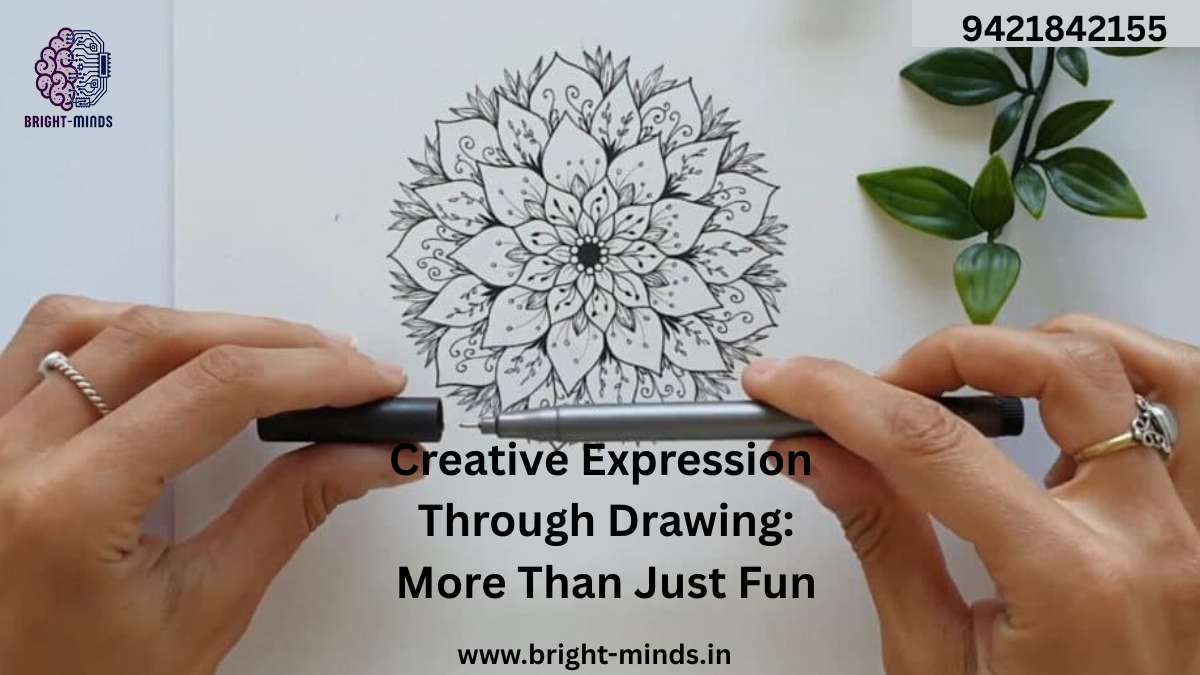In a world obsessed with efficiency and results, we often forget the value of creativity—especially in its most humble and joyful form: drawing. Whether you’re doodling in a notebook, sketching an idea during a meeting, or watching your child bring a story to life with crayons, drawing isn’t just fun—it’s powerful.
From stress relief to boosting problem-solving skills, drawing offers real-world benefits that go far beyond the canvas. And it’s not just for artists! Whether you’re a complete beginner, a working professional, or a parent nurturing your child’s development, embracing drawing as a form of creative expression can have a lasting impact on your brain, your confidence, and even your financial literacy.
Let’s explore how this timeless activity can become a tool for growth, both personally and professionally.
🎨 Drawing Isn’t Just for Artists—It’s for Everyone
One of the biggest misconceptions about drawing is that you need to be “good at it” to enjoy it. That’s simply not true.
Drawing is a form of communication, a mental exercise, and a tool for emotional expression. Much like writing or speaking, it allows you to translate thoughts and emotions into a visible form. And just like learning a new language, the more you practice, the better you become.
💡 Remember: You don’t need to be Picasso to pick up a pencil. All you need is curiosity and a willingness to explore.
🧠 The Science-Backed Benefits of Drawing
Drawing is more than a pastime—it’s a brain booster. Here’s how:
1. Enhances Focus and Memory
Research shows that sketching while learning helps improve retention and understanding. Whether you’re taking notes in a meeting or studying a concept, drawing helps the brain process and organize information more effectively.
2. Reduces Stress and Anxiety
Drawing provides a mindful break from screens, deadlines, and daily pressures. Just 15 minutes of doodling can lower cortisol levels, helping you reset and refocus.
3. Improves Problem-Solving Skills
Visual thinking helps break down complex problems. Designers, engineers, and entrepreneurs often use sketching to brainstorm and simplify ideas, making drawing a valuable professional skill.
4. Boosts Emotional Intelligence
Children and adults alike use drawing to express emotions that may be hard to articulate. It’s a safe and effective way to process feelings and build self-awareness.
📈 Market Trends & Industry Insights
🎯 The Rise of Visual Thinking in Business
From Silicon Valley startups to Fortune 500 companies, visual storytelling and sketch-noting are becoming key tools in presentations, design sprints, and strategic planning. Companies now value employees who can think visually—because it helps teams innovate, communicate, and collaborate better.
💼 Fact: LinkedIn Learning reports that “creativity” remains one of the most in-demand soft skills across all industries.
🖍️ EdTech and Creative Learning
Educational platforms are integrating drawing into STEM and financial literacy curriculums, using visuals to teach math, money, and science in more engaging ways. Creative apps like Procreate, Sketchbook, and Tayasui Sketches are bridging the gap between fun and functionality.
🧑🏫 Workplace Wellness
Employee well-being programs now include art therapy sessions, doodle challenges, and creative hours—proving that drawing isn’t just a hobby but a strategy for healthier, more innovative workplaces.
💼 Real-World Applications of Drawing
Drawing isn’t just for classrooms or art studios. Here’s how it’s used in everyday professional settings:
| Role | Use of Drawing |
| Product Designers | Sketch prototypes and wireframes |
| Marketing Teams | Storyboard campaigns and visuals |
| Engineers | Visualize concepts, structures, and diagrams |
| Educators | Use infographics and visual notes |
| Entrepreneurs | Pitch ideas with concept sketches |
Even if you’re not in a “creative” job, the ability to draw out ideas—literally—can set you apart from others in your field.
📝 Practical Tips to Get Started with Drawing
Ready to dip your toes into the world of drawing? Here’s how beginners can start small and stay consistent:
1. Start with Doodles
Doodling in the margins during calls or meetings isn’t wasting time—it’s helping your brain stay engaged.
2. Use Drawing Prompts
Try prompts like “draw your day,” “draw your dream home,” or “sketch your current mood.” These can unlock creativity and even help you reflect on your goals.
3. Take Online Courses or Join a Drawing Challenge
Platforms like ours offer beginner courses to guide you through basic techniques, perspective, and creative expression.
4. Keep a Sketch Journal
Instead of a traditional journal, try a sketchbook where you combine visuals and notes. This is especially powerful for planning, vision boards, and even financial goal tracking.
5. Explore Digital Drawing Tools
Apps like Adobe Fresco, Autodesk SketchBook, or Notability on tablets can help you practice drawing without the mess of materials.
📘 Drawing and Financial Literacy: The Hidden Connection
You might wonder—what does drawing have to do with financial literacy?
Actually, a lot.
Drawing improves visualization, which is key to understanding abstract financial concepts like:
- Budgeting
- Goal setting
- Investment growth
- Debt tracking
Using drawings to map out financial plans, timelines, or spending patterns can make these topics less intimidating and more accessible. It’s a fun way to make sense of numbers, especially for visual learners.
🧠 Example: Draw a simple “money tree” to represent income sources, expenses as leaves, and savings as fruit. It’s a creative way to teach children or even adults the concept of financial growth.
🌟 Relatable Success Stories
✨ Ramesh, 35 – Software Developer
During lockdown, Ramesh started doodling as a stress-relief hobby. A year later, he uses sketch-noting during client calls and brainstorming sessions. His team says it’s helped everyone understand and collaborate better.
✨ Anjali, 28 – Financial Educator
Anjali began using illustrated charts to explain budgeting to young adults. Not only did engagement go up, but students reported better retention and higher motivation to apply the lessons.
✨ Tara, 8 – Primary School Student
Tara started using drawing prompts to express her daily thoughts. Her teachers noticed she became more confident, articulate, and emotionally aware—all because of a sketchbook.
Also Read:
https://bright-minds.in/unlocking-word-meaning-for-class-ukg-english-to-hindi/

